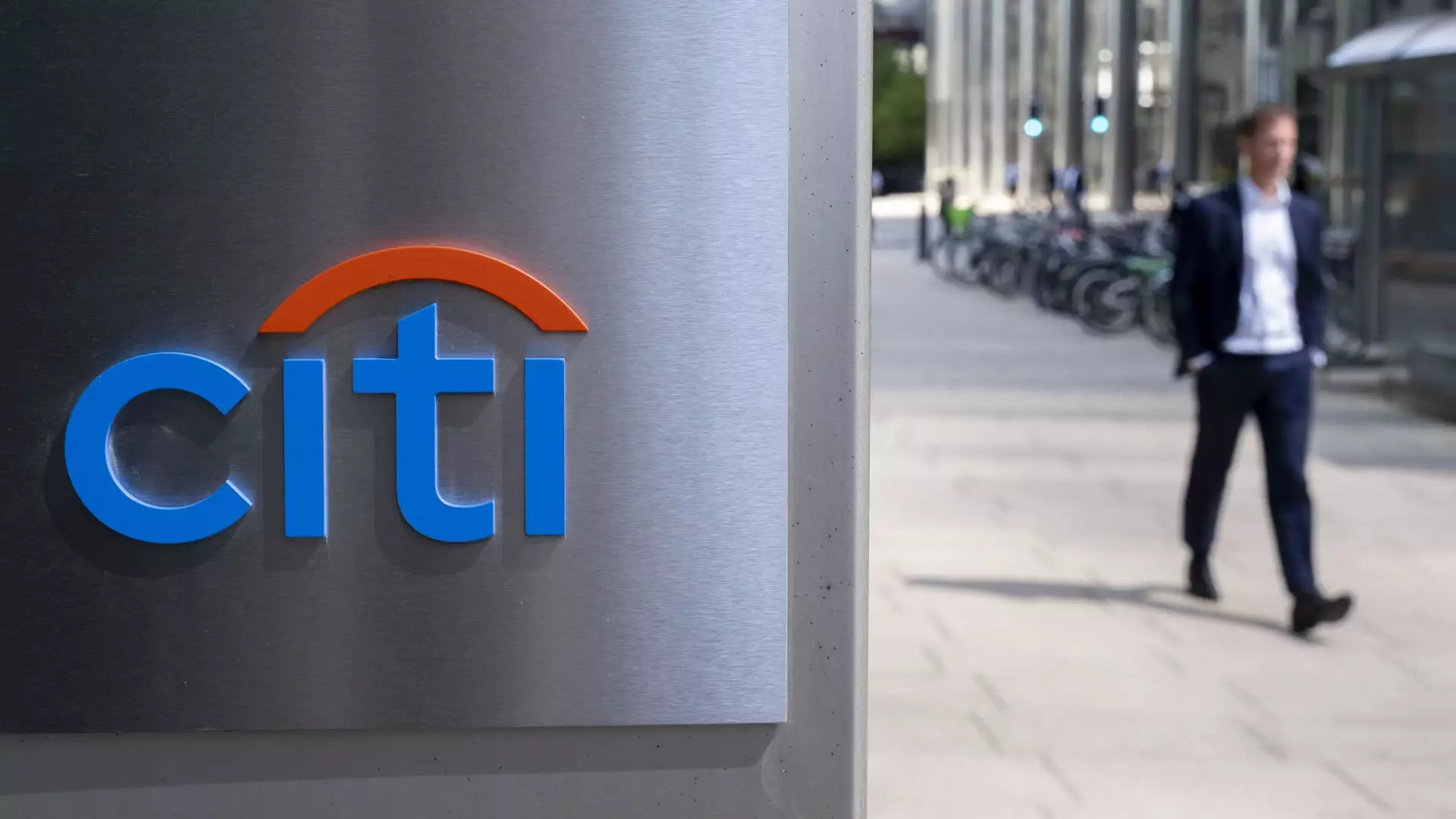On Tuesday, Citigroup announced its third-quarter earnings, revealing a performance that exceeded Wall Street’s projections. With earnings per share reaching $1.51 compared to the anticipated $1.31 and revenue totaling $20.32 billion against an expectation of $19.84 billion, the results initially appeared encouraging. However, the broader financial landscape underscores a more complex narrative, particularly as the bank proactively increased its provisions for potential loan losses. This cautious approach has raised eyebrows amidst concerns about the overall strength of the economy, reflected in a stock price decline of 4% following the report.
While it’s true that Citigroup’s banking segment showcased impressive growth—with an 18% revenue increase year-over-year and a whopping 31% surge in investment banking—net income presented a stark contrast. The bank recorded a decrease in profit, falling to $3.2 billion from $3.5 billion a year earlier. Analysts will focus on why earnings dropped even as revenues surged. One pivotal factor emerged: a significant increase in credit-related costs, with Citigroup calling out a net build of $315 million in its allowance for credit losses. Hence, while growth in sectors like investment banking and wealth management presents a positive outlook, these gains are somewhat overshadowed by rising credit costs.
Citigroup’s foray into equity markets performed well, boasting a noteworthy 32% revenue increase in this division. Conversely, fixed income revenue took a hit, declining by 6%. This dichotomy raises questions about the bank’s diversified strategy; while excitement in the equity market is palpable, the drop in fixed-income performance signals potential vulnerabilities that need addressing. Investors must assess whether this divergence will stabilize in the coming quarters or if there will be a sustained disadvantage in the fixed income area.
Leadership and Strategic Direction
Under the leadership of CEO Jane Fraser, who has been at the helm since March 2021, Citigroup has undergone a significant reduction in size and scope. Fraser’s strategy has prioritized slashing expenses and reducing Citigroup’s global footprint, a transformation that feels both necessary—and risky. While the bank did manage to lower its annual expenses by 2% and aims to keep them aligned with their guidance, any signs of stagnation might attract skepticism from stakeholders.
As Citigroup prepares for its upcoming analyst call, all eyes will be on Fraser for insights into her long-term turnaround strategy. Investors are eager for updates on performance metrics and the potential for future growth despite current challenges. Given that Citigroup stock had shown remarkable year-to-date growth—up by 28%—the current findings present a mixed picture. The success of not just Citigroup, but the larger banking sector, largely remains contingent on macroeconomic conditions, regulatory impacts, and further adaptations to an evolving financial landscape. As major competitors like Goldman Sachs and JPMorgan Chase also reported exceeding expectations this quarter, Citigroup must work diligently to secure its competitive edge moving forward, ensuring that its explosive growth areas can sustain themselves against foreseeable headwinds.

